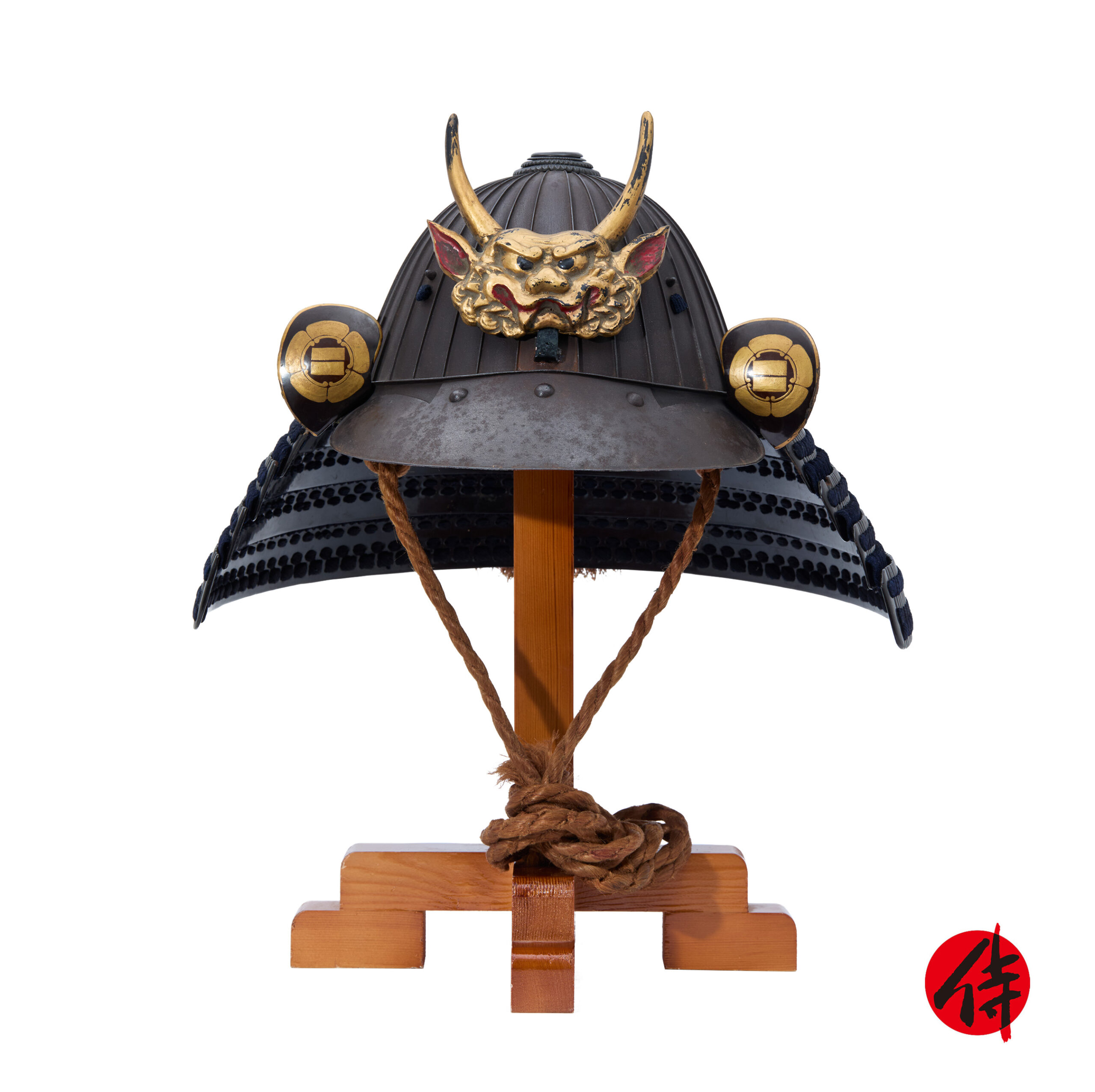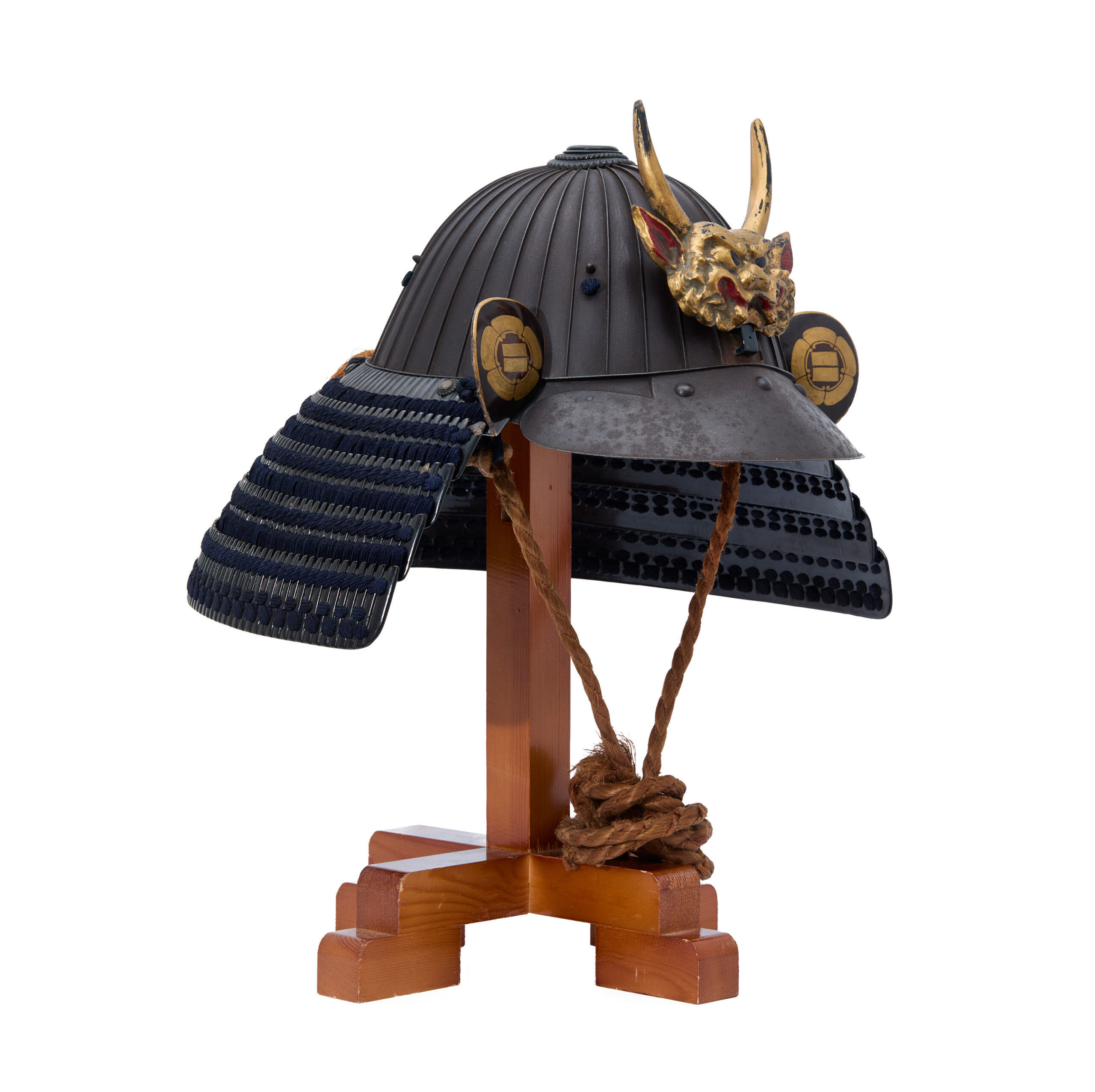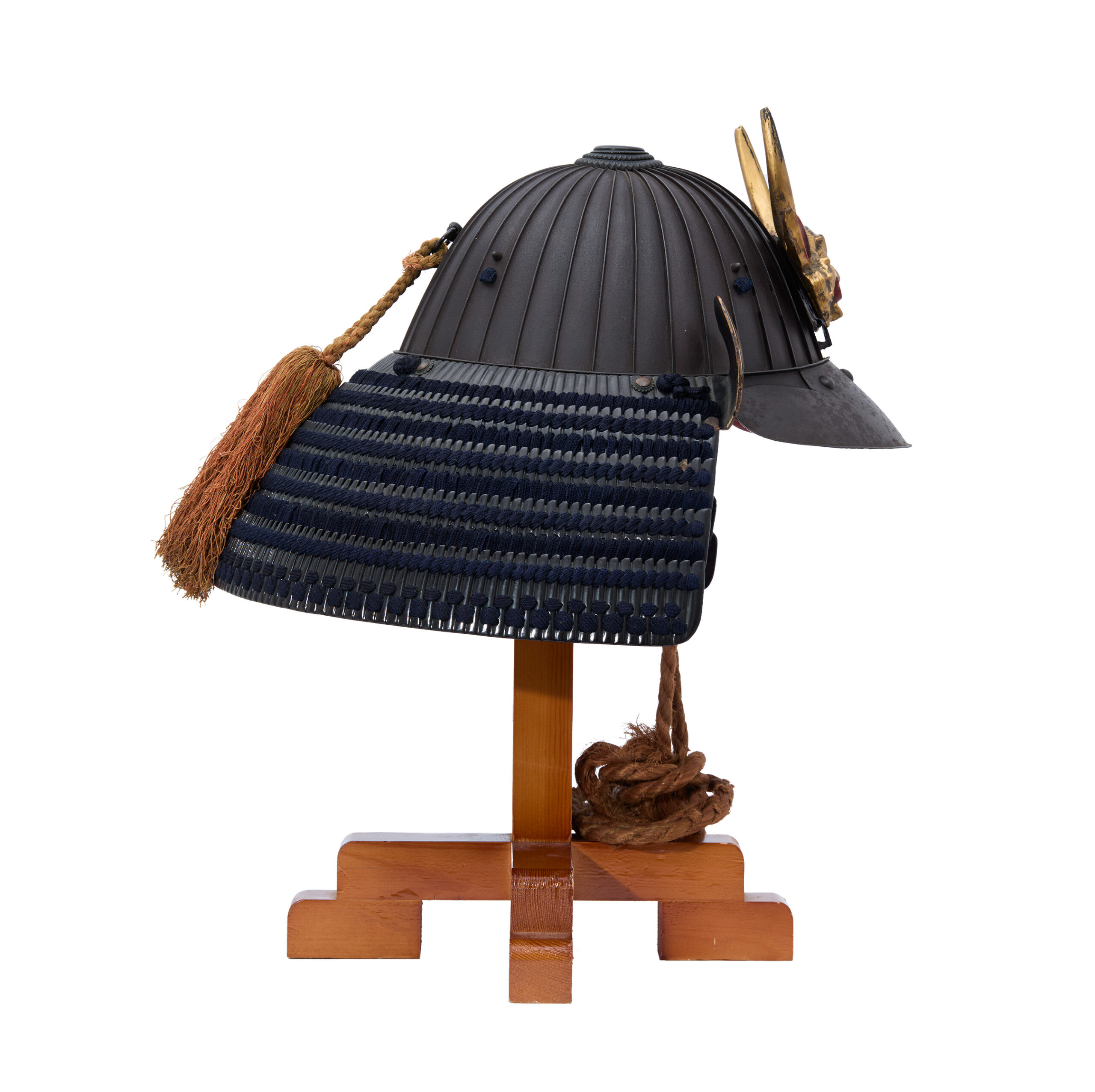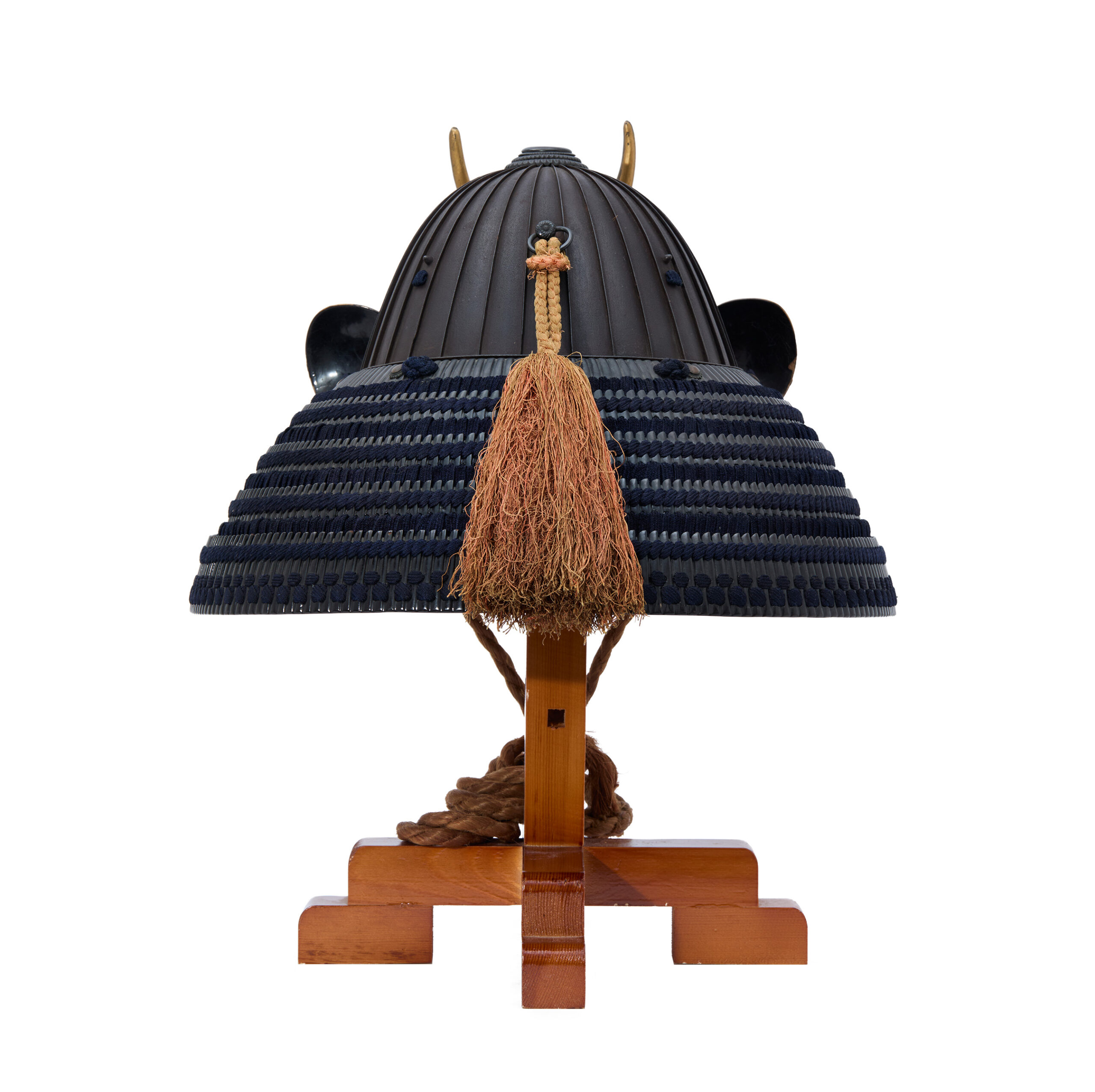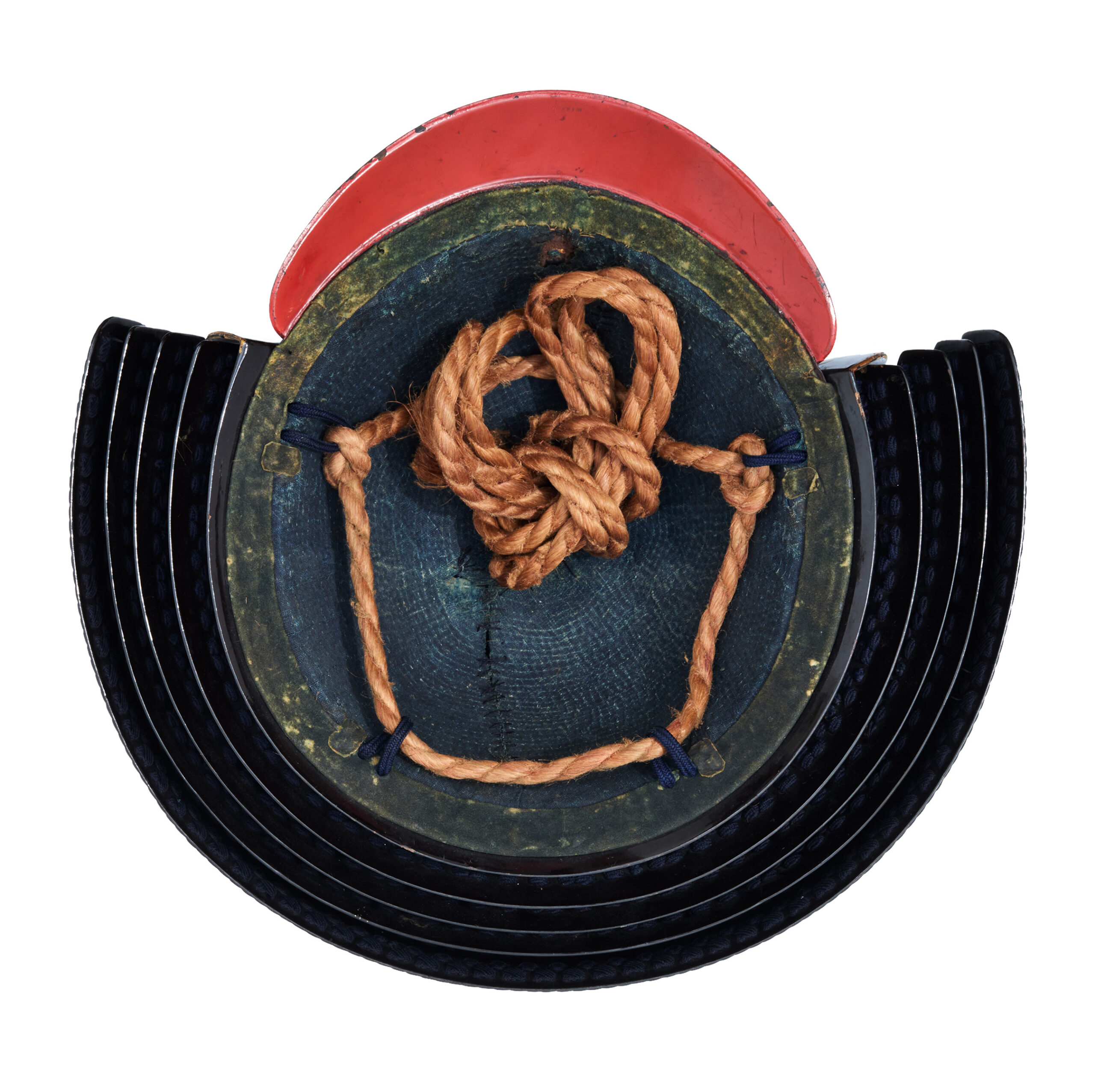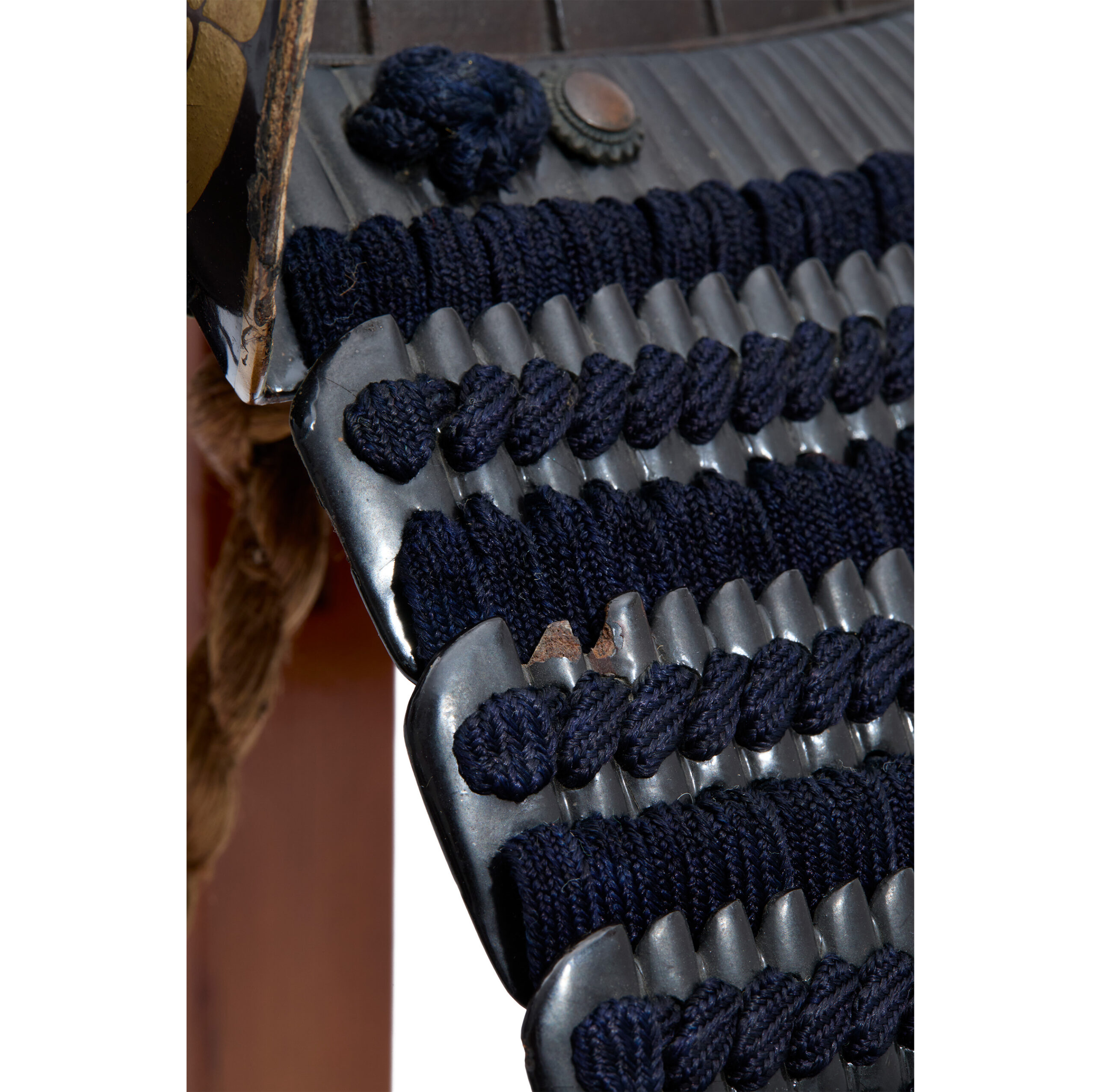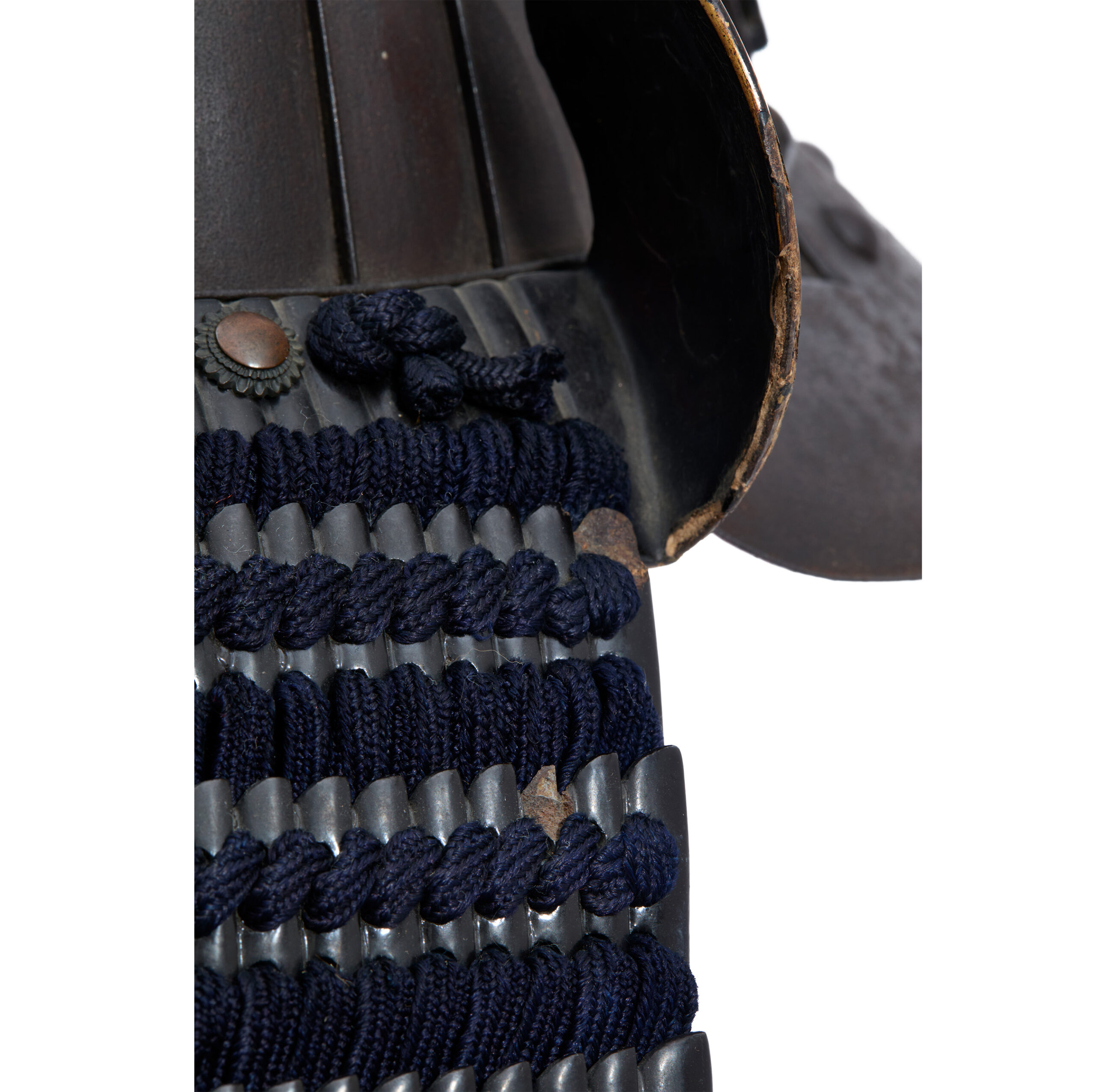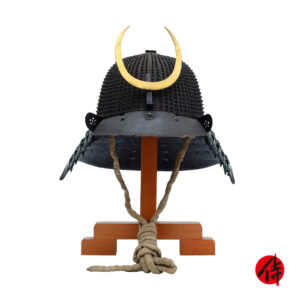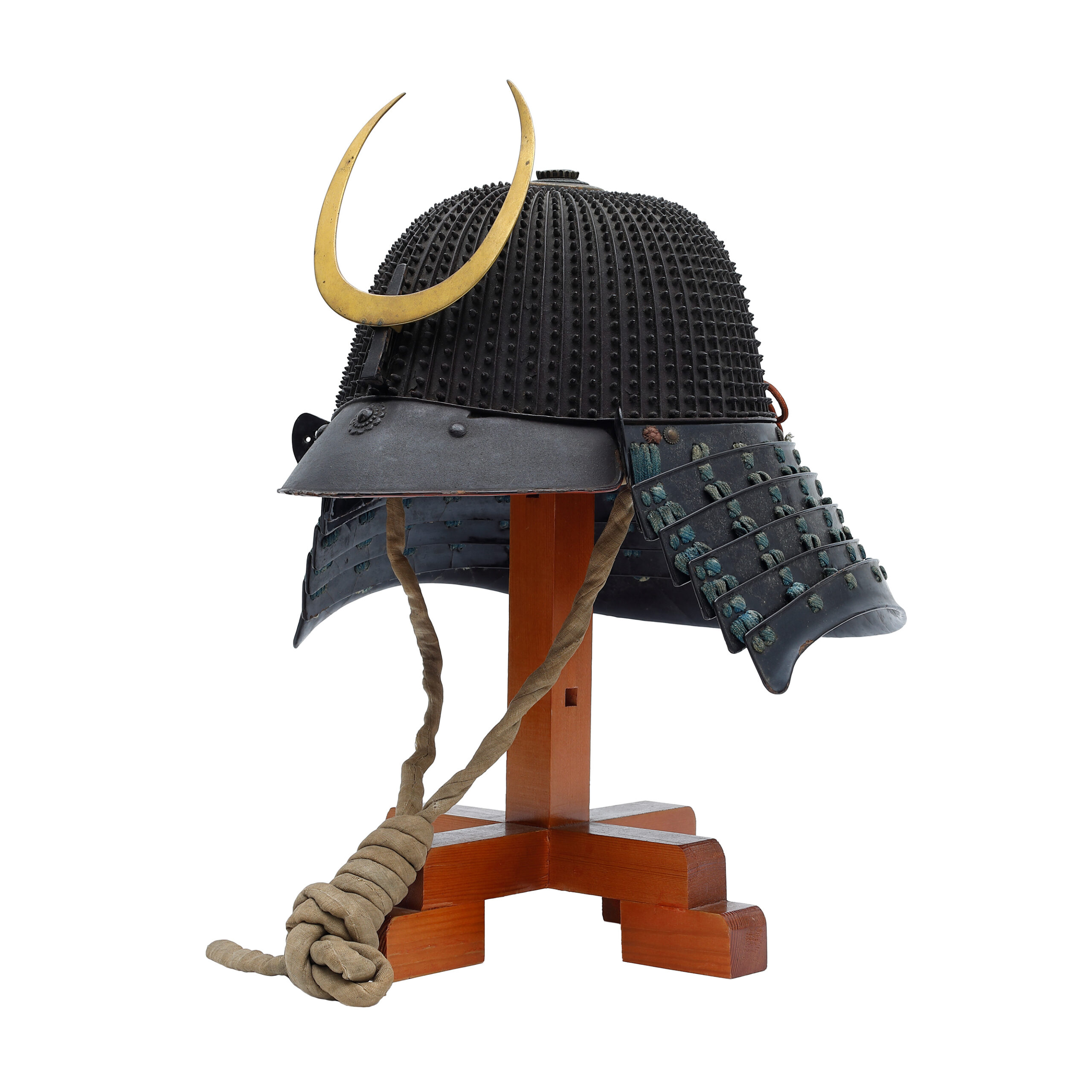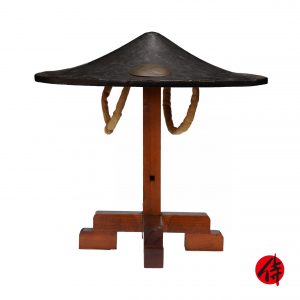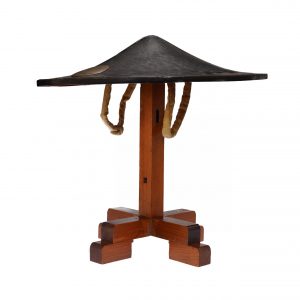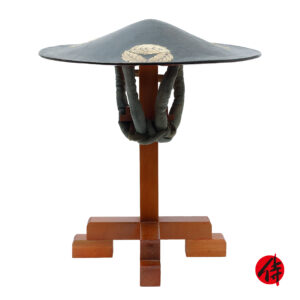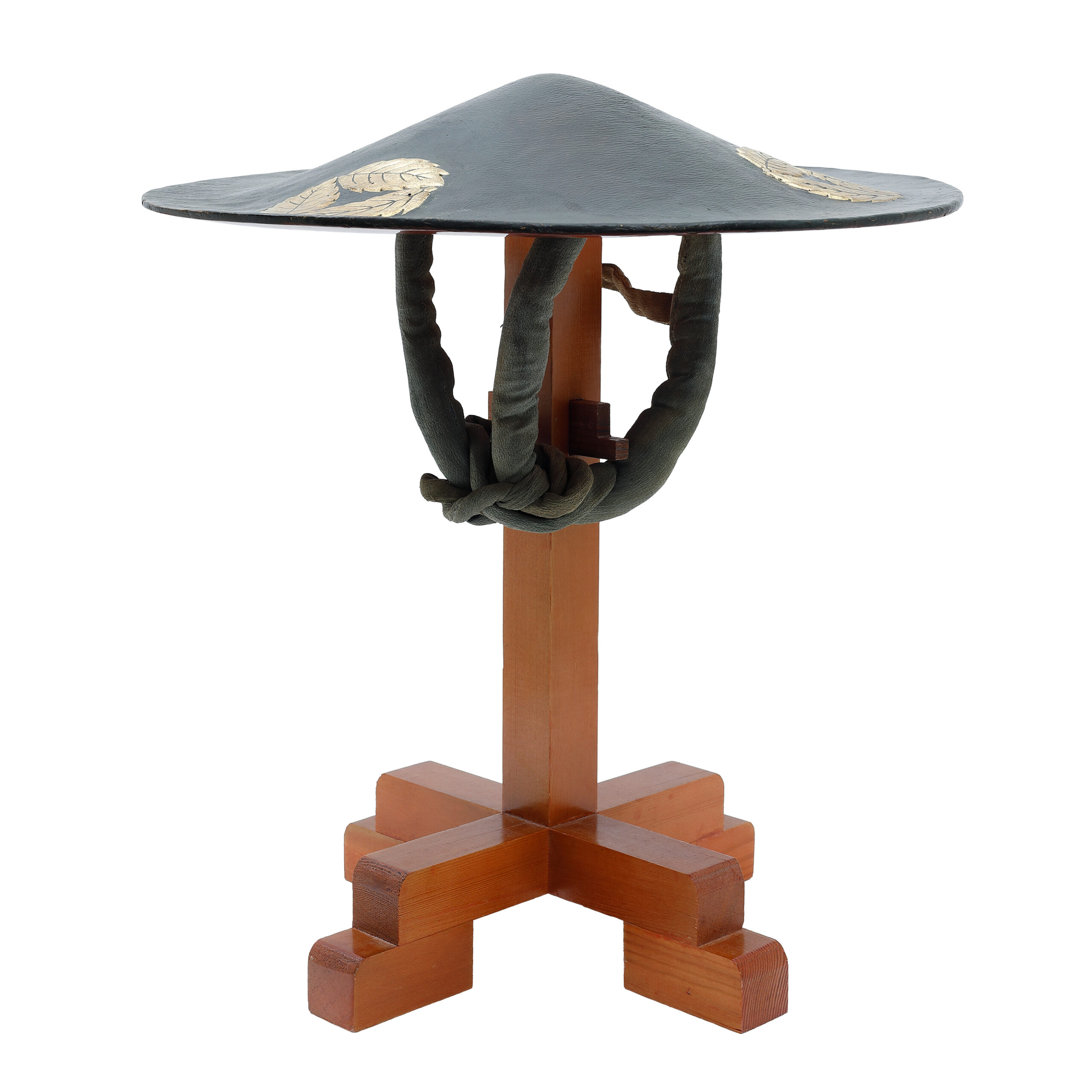Antique Samurai Helmet Mid Edo Period Sanjuni Ken Suji Kabuto with Tokubetsu Kicho Shiryo Certificate (KT-56)
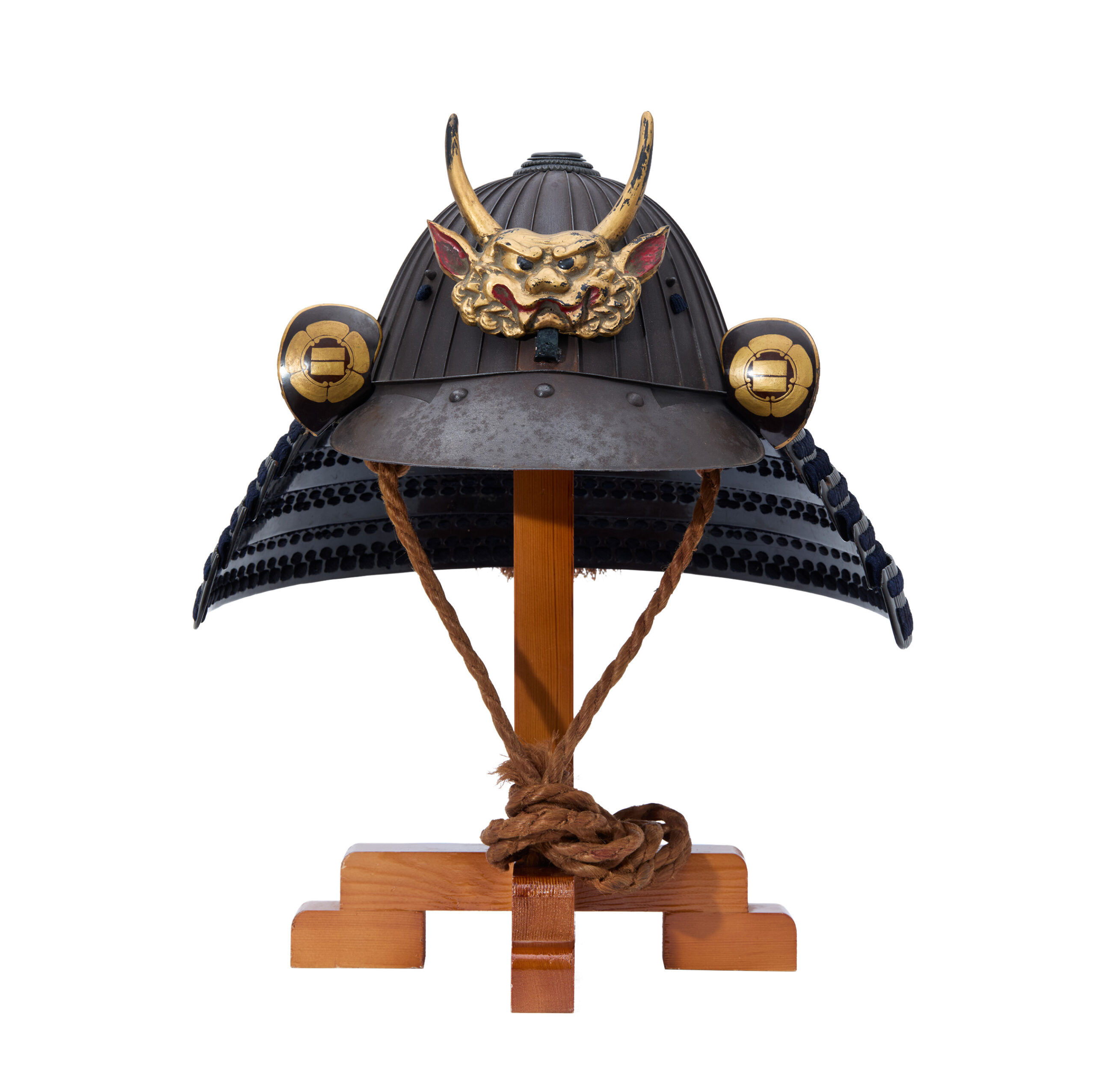
Period: Mid Edo Period (appraised by The Association for the Research and Preservation of Japanese Helmets and Armor)
Prime Material: Iron
Suji Kabuto consists of many small riveted iron plates to form its shape. This helmet has Sanjuni (thirty two in Japanese) iron plates. Suji means a stripe in Japanese, and you can see 32 stripes in this helmet. A high-class Samurai might have owned this helmet.
The Kabuto (兜, helmet) is a protector for the head. When people started using the Kabuto, it was initially designed for practical use. However, the principal purpose of its design has changed with time; Samurais tried to express their dignity, personality, or religion by wearing the characteristic design Kabutos. According to a theory, these unique designed Kabutos were made from the late Muromachi period to the Edo period. This type of Kabuto is categorized as the Kawari Kabuto (変わり兜), and a variety of materials were used to create them. For example, animal fur, seashells, plants, and papers were used as materials for decoration.
Before the Kawari Kabuto’s production, the Suji Kabuto (筋兜) has appeared during the Nanbokuchou (南北朝, 1337-1392) period. At that time, the tactic was gradually changed from the piggyback fight style to battle with the Tachi (太刀) sword and the Naginata (薙刀, Japanese halberd) on the ground. Therefore, there was a rise in demand for the weight saving of the Kabuto. Also, in order to turn the attack by swords, a new type of structure was invented; it is the Suji Kabuto (筋兜). Its form slides swords’ attacks when weapons hit the Kabuto. It is said that the production of the Suji Kabuto prospered in the Muromachi (室町, 1336-1573) period. The Suji Kabuto production continued in the Edo period also; however, iron plates that Kabuto makers used at that time were thicker than the Muromachi period’s Suji Kabuto. Therefore, it was heavier, and we understand that then people cherished the Suji Kabuto to enjoy the old-style Kabuto, not to wear it on the battlefields.
This particular helmet features a tetsusabiji (鉄錆地) finish—a surface left intentionally uncoated, allowing the natural rusted texture of the iron to emerge. Rather than concealing the material, this aesthetic highlights the aged character of the iron itself. The subdued, weathered appearance reflects the wabi-sabi philosophy of beauty in imperfection and transience, and it lends the helmet a sense of authenticity, history, and quiet dignity.
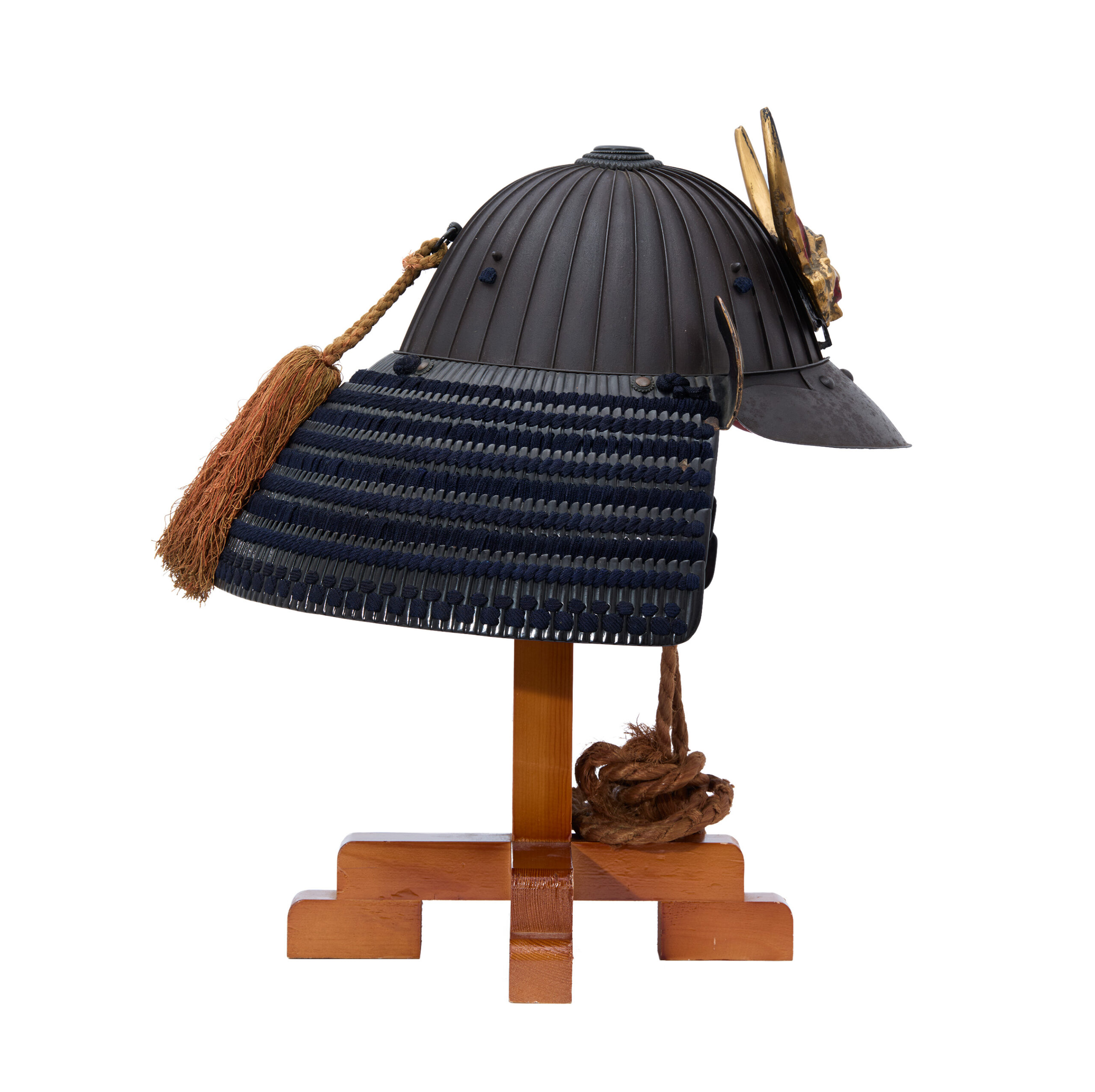
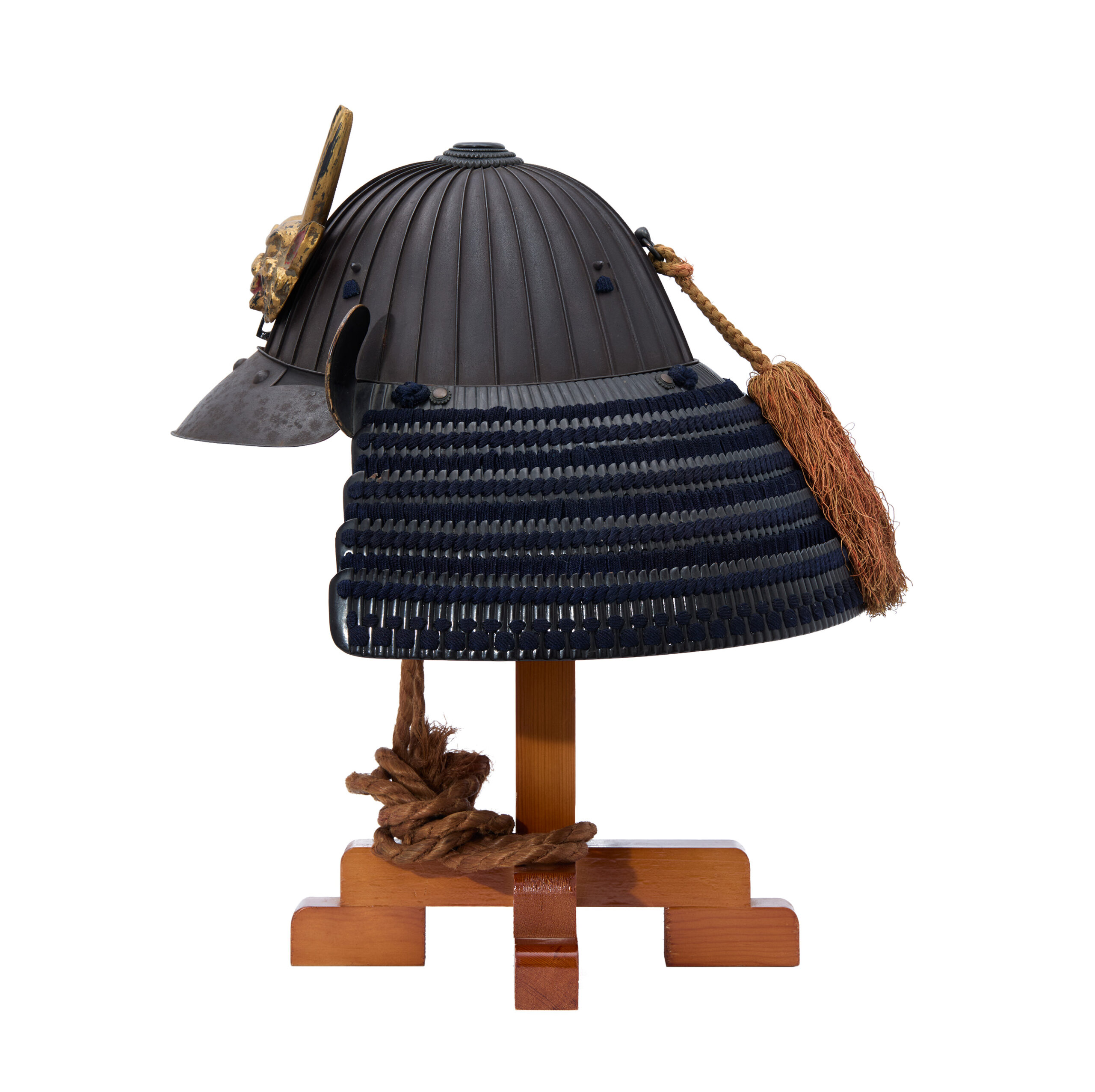
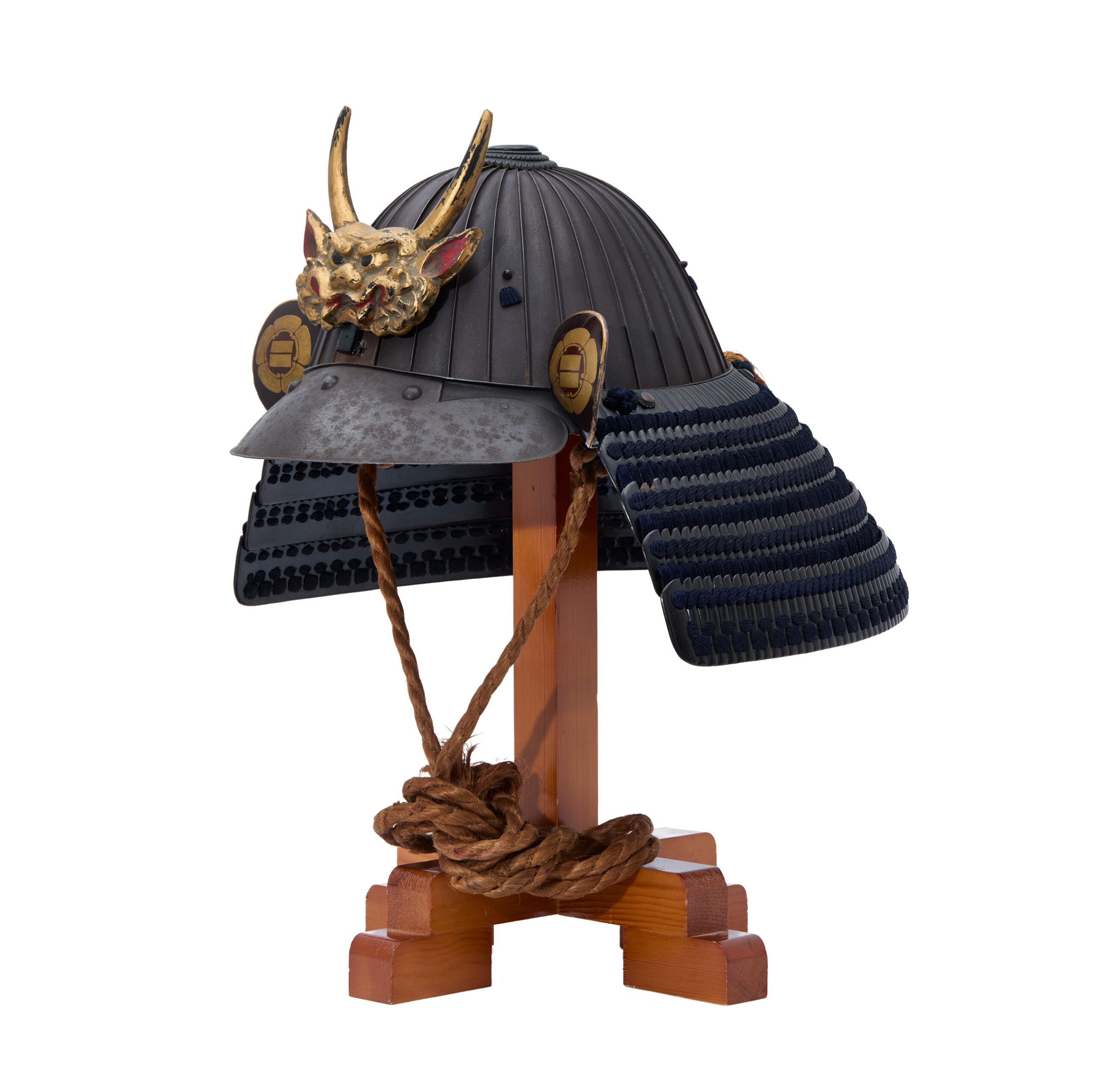
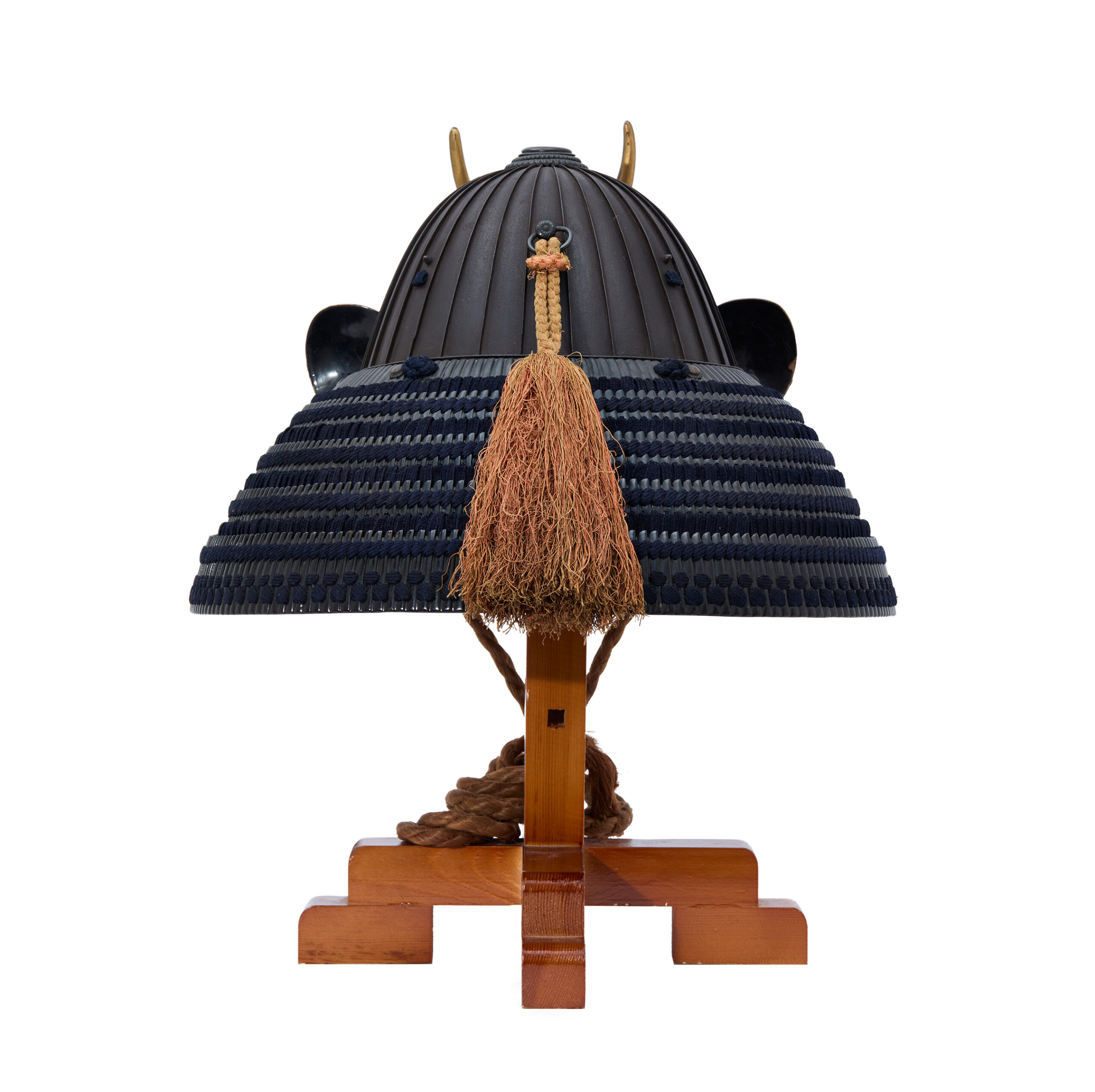
First, please take a look at the helmet crest (前立て, maedate) of this kabuto. We believe this particular design is inspired by a motif known as “Shigami(獅噛) “, which comes from the word “Shikami(顰)” — a fierce expression with raised eyebrows, wide-open mouth, and bared fangs, often seen on masks of demons or lions. In Japanese culture, “oni” (鬼, demons) are monstrous beings often depicted with horns and fangs in a humanoid form. While usually considered malevolent, oni can also appear as protective or benevolent entities. This duality stems from their varied interpretations—as vengeful spirits, deities, yokai (supernatural beings), or spiritual presences—depending on the context.
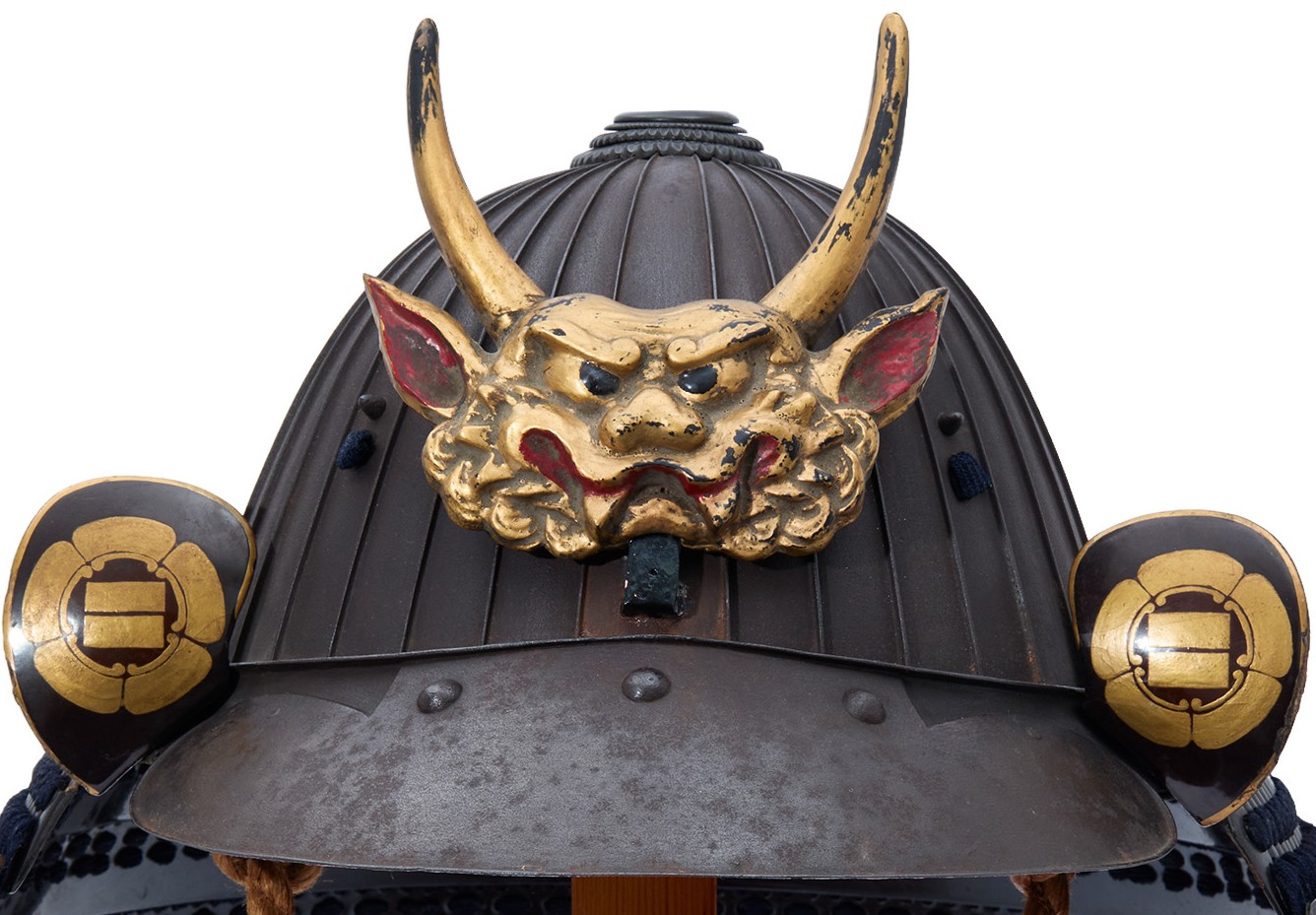
Now, let us focus on the “fukikaeshi“, the flared parts on either side of the helmet. These provided facial protection and often featured symbolic designs, such as family crests. On this helmet, we see a golden crest known as “Gōri ni Futatsugi” (五瓜に二木), composed of five gourd shapes and two vertical lines.
This design is believed to have been used as a private or secondary family crest (裏家紋, ura-kamon) by noble families of samurai lineage. Unlike the publicly displayed primary crests, ura-kamon were used internally within the household. Being granted such a crest was regarded as a high honor, and even today, some distinguished families continue to use both primary and secondary crests. Given these features, it is likely that this helmet once belonged to a samurai of distinguished or noble lineage.
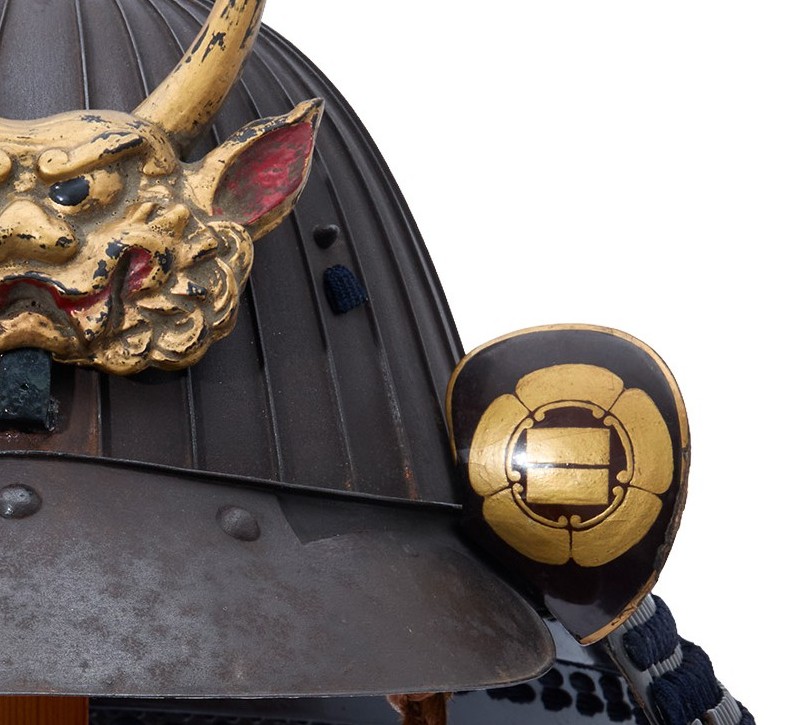
Certification:Tokubetsu Kicho Shiryo Certificate
The certificate was issued by The Association for the Research and Preservation of Japanese Helmets and Armor, which is the most trusted Japanese armor appraiser in Japan. Tokubestu Kicho Shiryo means special rare article. It is ranked as the third highest of five rankings.
This helmet was authenticated on May 11th 2025 as a Tokubetsu Kicho Shiryo and the paper mentions the helmet was made in the Mid Edo period. The purchaser will receive the original certificate as well. We can also translate what is written into English and make a PDF file for your record if you request.
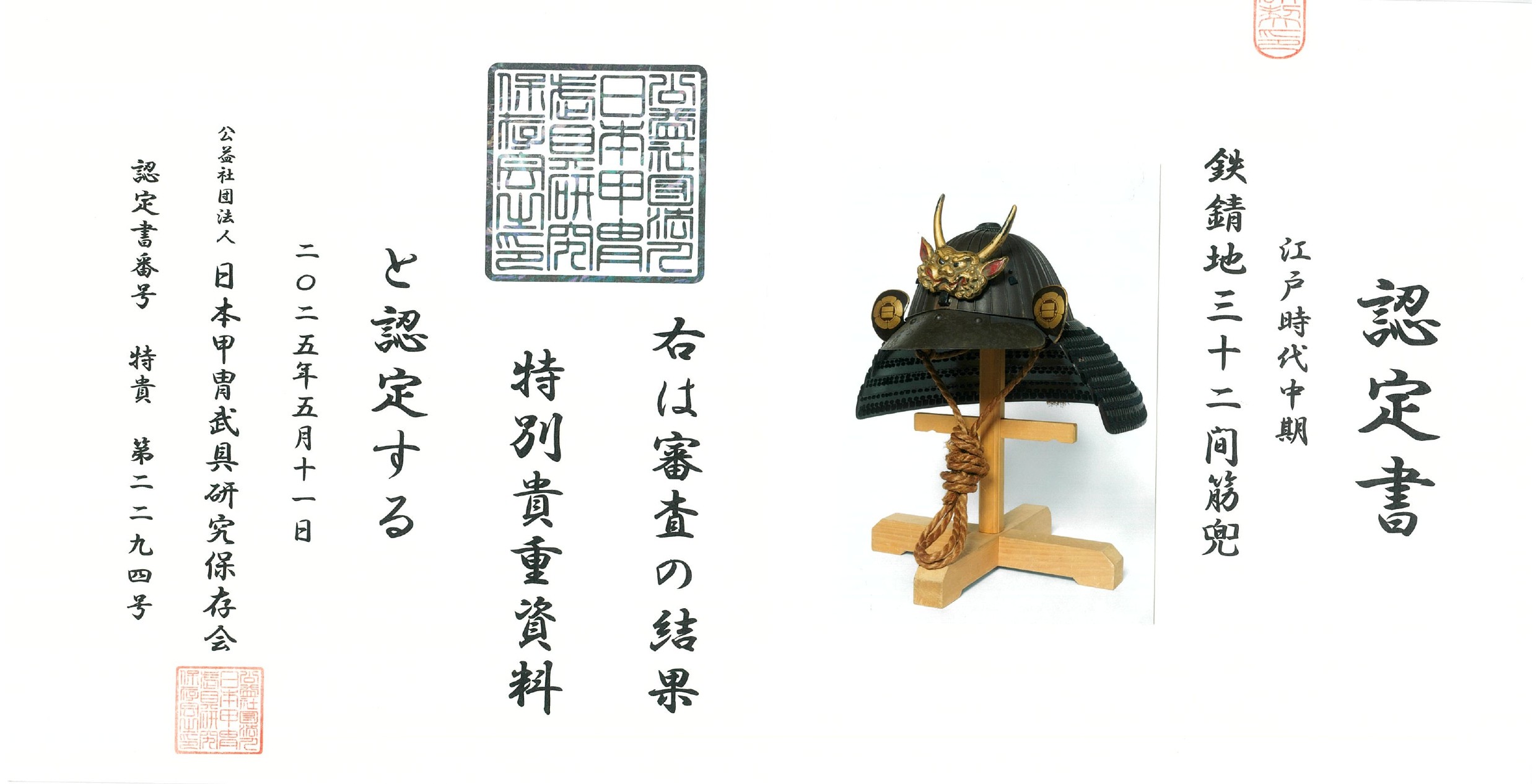
An English translation of the certificate is available on request. We won’t charge any additional fee.
【About us】
Samurai Museum is located in Tokyo, Japan, exhibiting antique artifacts related to the Samurai history. Samurai Museum Shop is the place for those who are interested in Japanese culture and craftsmanship. We deal with antique Samurai swords/armor, traditional crafts made in Japan and so on.
【Antique Japanese helmet (Kabuto) and Export process】
After receiving the full payment from you, we will apply for its export permit from the Board of Education to legally export the helmet to other countries. It normally takes around 2-4 weeks to receive this permit. And we would like you to expect at least 1.0-1.5 months for your order to arrive at your given address after you ordered.
【Payment Method】
We accept payment through Stripe (Credit card), PayPal, Apple Pay or ChromePay, all of which are secure payment methods. Also, you don’t need to make an account on Stripe for the checkout. If you prefer other payment method, please contact us. After confirming your payment, we will apply for an export permit. You may either pay in JPY, USD, AUD, CAD, EUR, CHF or GBP. The price is set in Japanese Yen. Prices in other currencies are automatically calculated based on the latest exchange rate.

【Shipping Duration】
We ship via EMS (Japanese Postal Service). It normally takes at least 5-14 days to receive any packages after you place an order. It might take longer depending on the season or custom clearance. We will inform your order’s tracking number via email.
【How to make sure the condition】
Please keep in mind that what you are going to purchase is an antique item. We uploaded high resolution photos for you to check its condition thoroughly. If you like to see more photos with different angles, please feel free to contact us. We will be happy to send them to you so that you can make informed decision. It is essential for us to know that you are happy with your choice of a sword. and we are prepared to use the best of our ability to serve you.
【How To Contact Us】
Please contact us through email, Facebook Messenger or Live Chat if you have any questions. You can find each icon on the right side of the website. Please click one of them to reach us. We will reply to you within 1-2 business days.
【How To Preserve Antique Samurai Armor/Helmets】
Dryness, humidity, and bad ventilation might deteriorate the condition of antique Samurai armor/helmet. The best temperature to preserve Samurai armor/helmet is around 20℃ in Celsius, and humidity should be about 60%. Direct sunlight should be avoided. We recommend storing armors/helmets in a room with good ventilation. If you like to display them outside the boxes for a prolonged time, we suggest using a glass case in order for dust not to be accumulated easily. In case you don’t use a glass case, please make sure to regularly dust off from the armor/helmets by using a soft brush made of delicate cloth or brush for painting.
If you like to know more about the preservation of this armor, please feel free to contact us.
